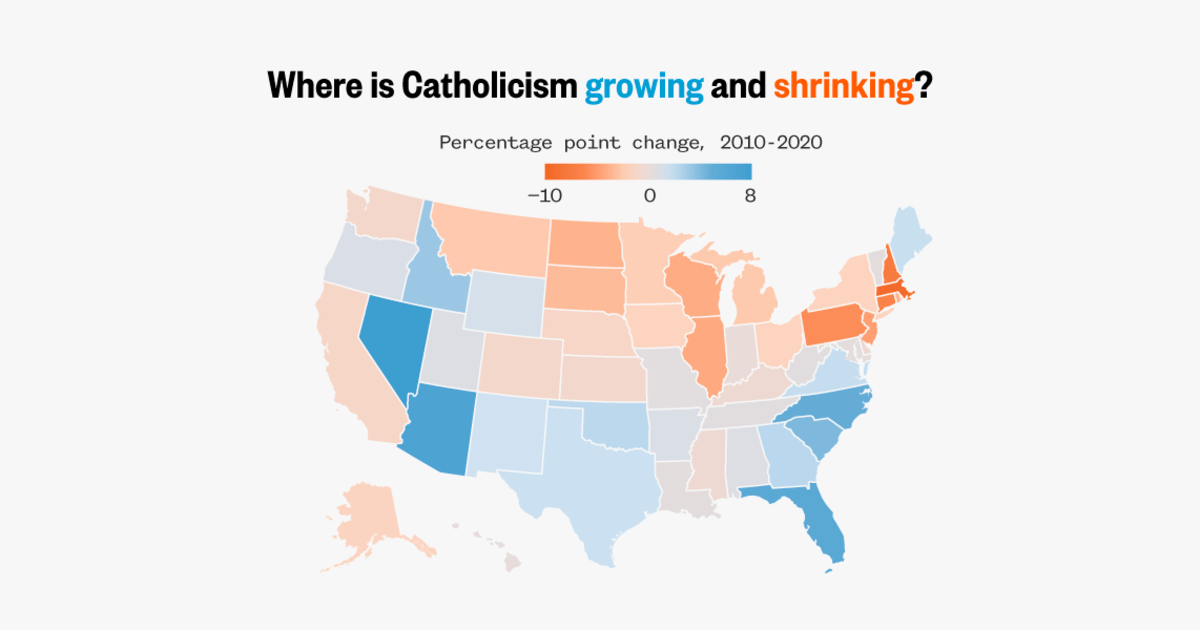
States along the southern border have seen some of the largest influxes of Catholics — Florida‘s Catholic population rose 5.6 percentage points from 2010 to 2020, to the point where 1 in 5 Floridians now profess that faith. Something similar happened in Arizona, where the share of Catholics increased from 14.6% in 2010 to 21.3% in 2020.
The U.S. Religion Census, taken every 10 years, counts congregations and congregants across 372 religious bodies and is organized by the National Council of Churches, an organization of Christian faith groups.
Data shows that, by race and ethnicity, Catholicism is growing most among Hispanics in the United States. According to Pew Research Center, in 2007, 29% of all Catholics in the U.S. were Hispanic; that percentage grew to 36% at the end of 2024.
The rise in the number of Catholics comes despite a drop in the total number of churches. The Religion Census shows there were 19,405 Catholic churches in 2020, 1,000 fewer than a decade earlier. Because of this imbalance, certain states’ remaining churches have ballooned in numbers — the average congregation in Florida counts 7,000 regular worshippers, while in Nevada it’s more than 10,000.
“The churches are getting very large — at times over 30,000 families for one parish and often 1-2 priests,” Scott Thumma, co-director of the Hartford Institute for Religion Research, said in an email.
Some of this imbalance, Thumma said, owes to the financial repercussions of clergy sexual abuse scandals. Officials and juries around the country have found that some Catholic clergy sexually abused children for decades. In many cases, Catholic leadership attempted to cover up the abuse, perpetrated against thousands of children.
